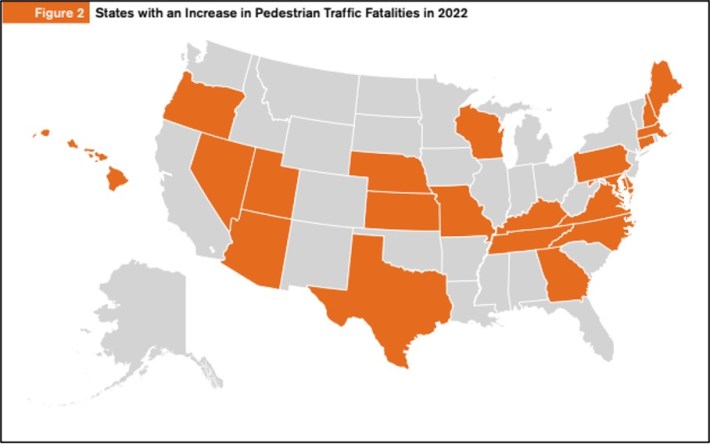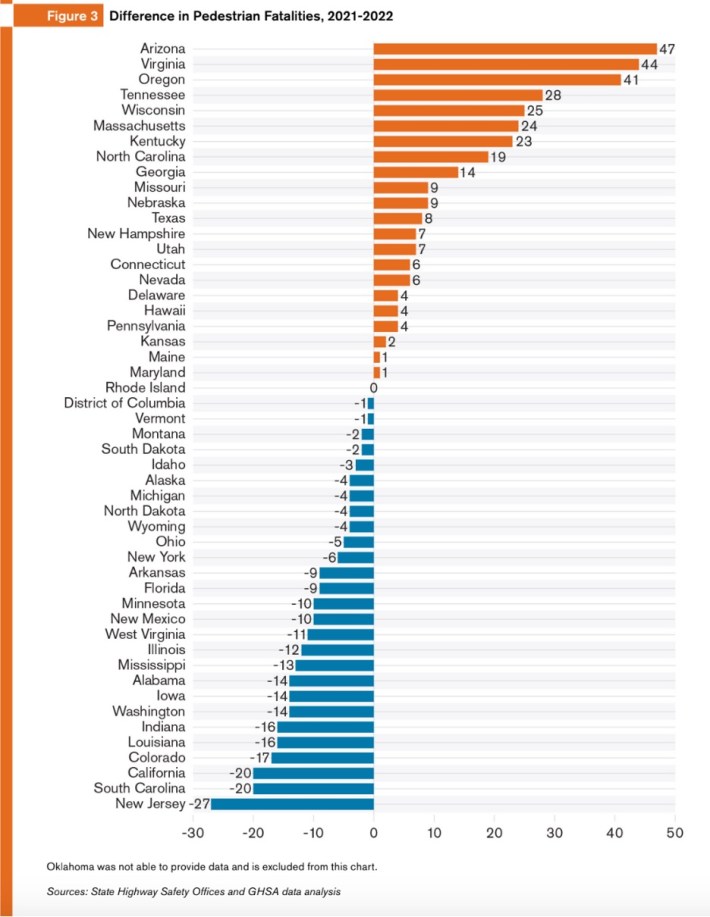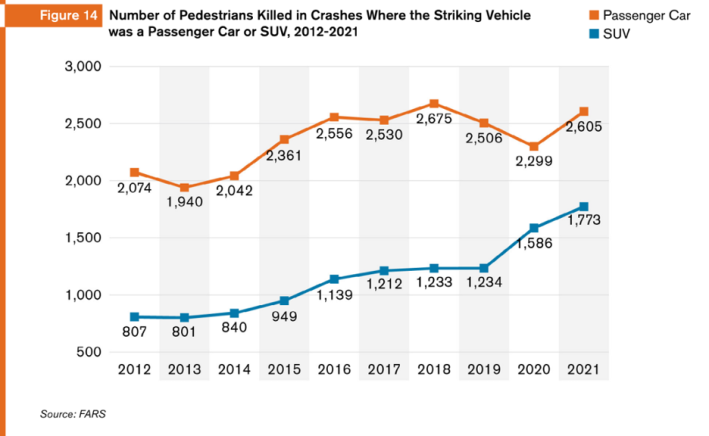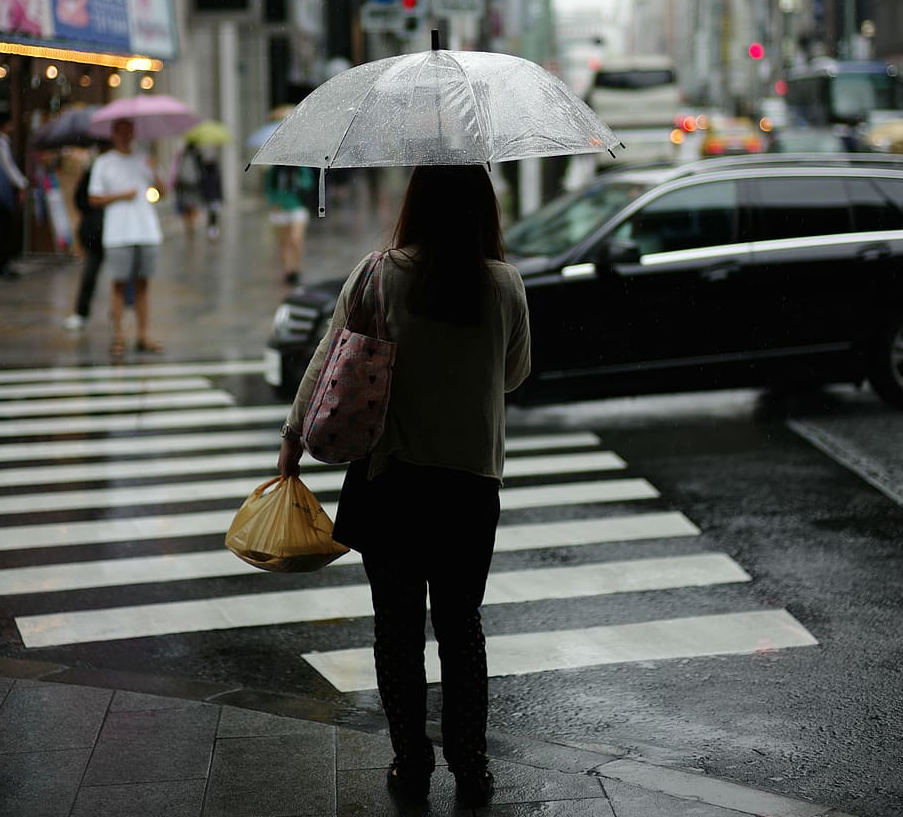Pedestrian deaths in the United States climbed once again in 2022, reaching their highest point in 41 years and continuing a bloody trend that shows no signs of stopping.
According to new estimates from the Governors Highway Safety Association, "at least" 7,508 people on foot were killed by drivers on U.S. roads last year — an estimate, that notably, excludes the entire state of Oklahoma, which failed to deliver its preliminary totals this year due to technical difficulties but has averaged 92 pedestrian deaths in recent years.
If that estimate sticks, U.S. walkers will have experienced a stunning 77-percent increase in deaths since 2010, rising at a rate more than three times faster than the rest of the traveling public, for whom fatalities increased 25 percent over the same period.

If all those stats sound disturbingly familiar, frankly, they are.
Last year, the GHSA accurately estimated that 2021's pedestrian deaths had reached a 40-year high — and the year before that, the deaths reach what had been, back then, an unthinkably horrific 31-year peak. In all three years, the GHSA noted that large arterials designed to prioritize vehicle speed, large vehicles, and dark road conditions were disproportionately common factors in fatalities — and in the absence of urgent action to address those systemic factors, safety officials are begging drivers themselves to be more careful.
"We need drivers to understand: you’re controlling this 3,000-plus-pound machine, and if you don’t focus on the road, somebody could die today," said Pam Shadel Fischer, senior director of external engagement for the Association. "'7,508' is not just a number. It’s about real people who did not get the chance to finish their lives and do the things they wanted to do."

Shadel Fischer recognized, though, that even the most desperate pleas to motorists are insufficient to tackle the scale of the pedestrian death crisis — especially in the communities that are driving the surge.
A whopping 22 states reported fatality increases between 2021 and last year, some of which were alarmingly steep: Arizona (+18 percent, or 47 more dead walkers than the year prior), Virginia (+35 percent, or 44 additional dead), and Oregon (+46 percent, or 41 additional dead) all showed up near the top of the Association list, and those percentages can't always be easily explained by factors like temperate weather encouraging people to walk more, or small statewide populations that made increases and decreases look particularly dramatic. (In other words, car-dominated, depopulated states like Wyoming and North Dakota are probably not the national gold standard for traffic safety, despite the fact that walking deaths decreased by 33 percent or more in each last year.)
Even in states where fatalities fell, though, Shadel cautioned policymakers against taking even a single lost life for granted — or leaving a single safety strategy on the table.
"At the end of the day, every state has to do better," she added. "I know people say it’s unrealistic, but it's true: no death is acceptable. ... And It really is about a kitchen sink approach: How are we designing our roads? How are we educating and engaging with the public — particularly with drivers, because the onus is really on drivers to be on the lookout for people on foot and give them the space they need to be safe. And I know it’s not a popular topic, but we have to talk about equitable enforcement, too."

Shadel Fisher especially hopes the National Highway Traffic Safety Administration is paying attention to the report's findings since the agency is current accepting comments on a slew of new rulemaking regarding vehicle safety for pedestrians. Among them is a proposed new Automatic Emergency Braking rule that would set strict standards for how cars must react when confronted with a walker, but would not require important companion technology like Intelligent Speed Assist systems that would prevent vehicles from reaching the deadly velocities at which braking systems are no longer effective.
The agency has also proposed adding a dedicated pedestrian safety rating to all new cars to encourage drivers to choose set models, but that grade would be only a pass/fail, and would only be displayed on NHTSA's website, not alongside other safety metrics that are highly visible to buyers.
"We need to make sure this info is prominently posted," Shadel Fisher added. "Safety sells; people want to know that their cars will protect themselves and others on the road. Personally, I’d love to see this info in dealership showrooms, front and center on windshields. The more prominent we can make this information, the better."
There may be one bit of somewhat good news about our national roadway fatality numbers, albeit one that falls outside the realm of the GHSA report: according to new preliminary estimates from NHTSA released the day before, traffic fatalities actually fell by about 3.3 in the first quarter of 2023, compared to the same period the year prior. That stat, though, did not break down whether walking deaths fell, too — and as reps for the Advocates for Highway and Auto Safety rightly pointed out, those numbers are "still excessively high."






